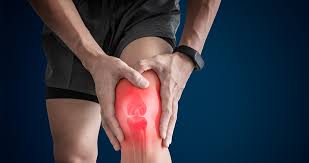Pain and stress are closely related and have complex interactions. Effective pain management techniques frequently require to address both the physical and psychological sides of the problem, even though stress might make it worse. Comprehending the correlation between stress and pain is imperative in formulating all-encompassing pain management strategies that augment overall wellness and elevate life quality.
The Mechanisms Underlying Stress and Pain
The body goes through a series of physiological reactions when under stress, mostly due to the sympathetic nervous system being activated and stress chemicals like cortisol and adrenaline being released. This “fight-or-flight” response tenses muscles, raises blood pressure, and speeds up heart rate in order to prime the body to deal with perceived dangers.
In contrast, pain is a complex experience that consists of sensory, emotional, and cognitive elements. Pain signals are sent from the site of an injury or disease to the brain through the nerve system. The feeling of pain is then produced by the brain’s interpretation of these impulses.
Pain relief can be made worse by stress in a number of ways. Stress can raise arousal levels, which can induce tense muscles and worsen pre-existing pain issues or create new ones. Furthermore, stress can heighten the experience of pain by intensifying the brain’s reaction to pain cues. People’s pain thresholds can be lowered by chronic stress in particular, making them more vulnerable to painful stimuli.
The Relationship Between Psychology and
There is a strong psychological component to the link between stress and pain. Stress has the power to amplify the emotional experience of pain, resulting in depressive, anxious, and hopeless feelings. A vicious cycle where stress and pain reinforce one another might result from this mental anguish, which can then intensify the impression of pain even more.
Furthermore, stress can influence coping strategies for pain. Because chronic stress can exhaust mental and emotional resources, people who experience it may be less able to properly manage their discomfort. This may result in a greater reliance on unhealthy coping mechanisms, including abstaining from physical activity or abusing drugs, which over time may make pain worse.
Stress Management’s Function in Pain Relief
Since there is a strong correlation between stress and pain, managing stress and its effects on the body and mind is frequently necessary for successful pain management. A thorough pain treatment plan should include stress management approaches since they can assist lessen pain’s psychological and physical effects.
1. Meditation and mindfulness
Effective techniques for handling stress and discomfort include mindfulness and meditation. These techniques entail living in the present and cultivating an impartial awareness of one’s feelings, ideas, and physical experiences. Studies have indicated that by modifying the brain’s reaction to pain signals, mindfulness meditation can lower pain perception and raise pain tolerance.
Frequent meditation practice can also help you feel less stressed because it promotes relaxation and lowers cortisol levels. This may result in lessened tenseness in the muscles and an improved feeling of emotional health, both of which are advantageous for pain management.
2. CBT, or cognitive-behavioral therapy
One well-researched psychological treatment that has shown promise in the management of chronic pain is cognitive-behavioral therapy. CBT assists people in recognizing and altering harmful thought patterns and actions that exacerbate pain and stress. People can enhance their overall quality of life and lessen the emotional toll that pain has on them by adopting healthier coping mechanisms.
In addition to reducing physical tension and pain, cognitive behavioral therapy (CBT) can teach relaxation techniques including progressive muscle relaxation and deep breathing.
3. Exercise and Physical Activity
Even though it might seem paradoxical, getting regular exercise might help you effectively manage your pain and stress. Natural mood enhancers and painkillers, endorphins, are released when you exercise. Additionally, it enhances bodily function and lessens muscle tension, both of which might lessen pain.
Walking, swimming, and yoga are examples of low-impact workouts that can be very helpful for people who suffer from chronic pain. These exercises don’t put undue stress on the body and can help increase strength, flexibility, and endurance.
4. Choices for a Healthier Lifestyle
Keeping up a healthy lifestyle is crucial for pain and stress management. Better sleep, a well-balanced diet, and abstaining from drugs like alcohol and nicotine can all help promote mental and physical well-being. Adequate dietary intake can bolster the body’s inherent restorative mechanisms, and getting enough sleep is essential for recuperation and pain reduction.
5. Social Networks and Support Systems
Effective social support networks can be very helpful in reducing stress and discomfort. Emotional support from social networks can lessen the negative consequences of stress and enhance coping skills. Sharing stories and getting empathy and understanding from others—whether via family, friends, or support groups—can greatly improve wellbeing.
In summary
Stress and pain interact in a complicated and multidimensional way, each having a significant impact on the other. It is crucial to treat the psychological and emotional aspects of pain in addition to its physical manifestations in order to manage it successfully. People can lower their stress levels, increase their pain threshold, and live better overall by adopting stress-reduction strategies like mindfulness, cognitive-behavioral therapy, exercise, and healthy lifestyle choices. Achieving long-lasting relief from pain requires a thorough understanding of how stress affects the body and taking appropriate action.
